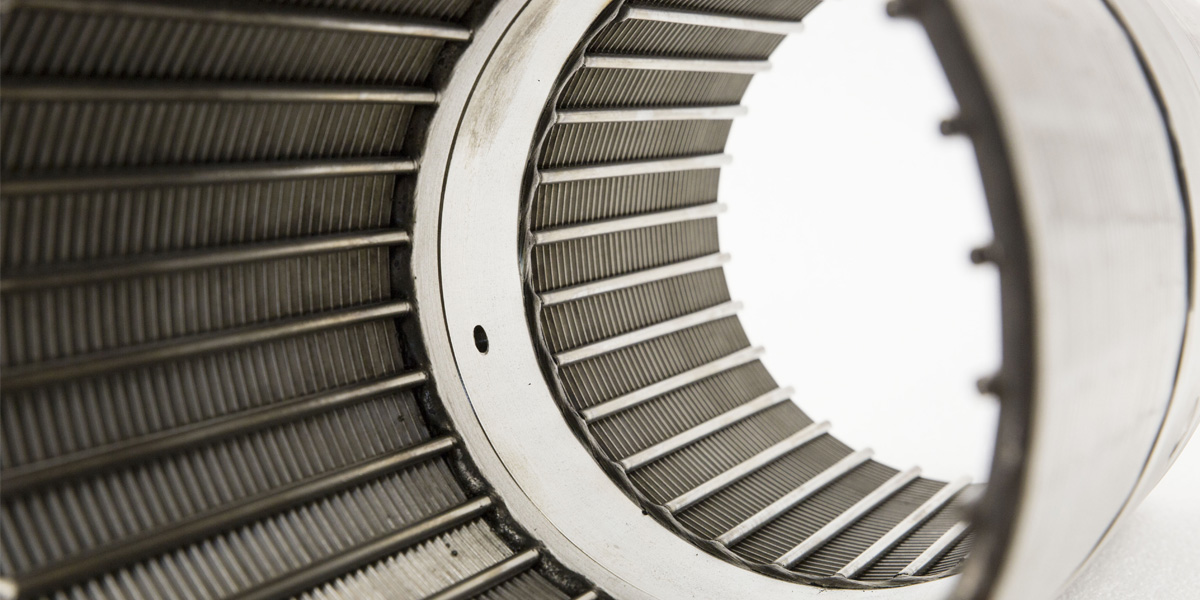Continuous spiral filters
Spiroscreen is the range of continuous spiral filters entirely produced by GTS.
The filters are constructed by continuously winding, with a controlled pitch, a triangular section profile on round profiled conductors, each intersection between triangular and round profile is resistance welded (RW).
ADVANTAGES
HIGH EFFICIENCY OF FILTERING and HIGH PERFORMANCE
MATERIAL
The construction is in stainless steel, a first choice material to withstand the stresses during installation, pressure and corrosion.
Stainless steels
– Classification according to EN 10088 – 1
| W.N. | AISI |
| 1.4301 | 304 |
| 1.4401 | 316 |
| 1.4307 | 304 L |
| 1.4404 | 316 L |

General characteristics of the steels:
AISI 304 – widely used in the food and chemical industry, in medical systems, in urban furniture and architectural decorations. To be avoided in marine and coastal environments.
AISI 316 – Good resistance to corrosion in marine environments and in contact with salts and organic acids. Used in the oil, chemical, food, textile, furnace parts and ship equipment sectors.
* _ _ _ L – carbon-poor steel: it has better resistance to intergranular corrosion.
TYPE OF APPLICATION ENVIRONMENTS
SEA WATER
Austenitic stainless steel AISI 316 L
- High chloride content
- Low fluid velocity in brackish places (<1.5 m / s) – more corrosive
- Presence of splashes
OTHER TYPES OF WATER
- Acid water – AISI 316 austenitic stainless steel
- Non-acid water – AISI 304 austenitic stainless steel
- River water (presence of biological activities) – AISI 316 austenitic stainless steel
GROUNDS
Austenitic stainless steels AISI 304 and AISI 316 L
- chloride ions <500 ppm
- resistivity> 1000 ohm * cm
- pH> 4.5
MECHANICAL RESISTANCE
The tensile strength is given by the longitudinal lines, which behave like a steel rope, where the greater the number of “wires” and the greater the tensile strength.
The standard resistances for each diameter have been fixed, the maximum achievable according to the construction parameters and in relation to the sections of the profiles.
The resistance to external pressure is variable; through the selection of the various sections of the profiles, in relation to the diameter, it is possible to make filters with different resistances according to the needs.
Since the pressure resistance depends on the slot size, the values shown in the table refer to a 0.5 mm slot.
|
Nominal diameter (mm) |
Nominal diameter (ton) |
| 114 | 7 |
| 139 | 8 |
| 168 | 9 |
| 219 | 12 |
| 244 | 14 |
| 273 | 15 |
| 323 | 17 |
| 355 | 20 |
| 406 | 24 |
| 508 | 31 |
| 609 | 38 |




